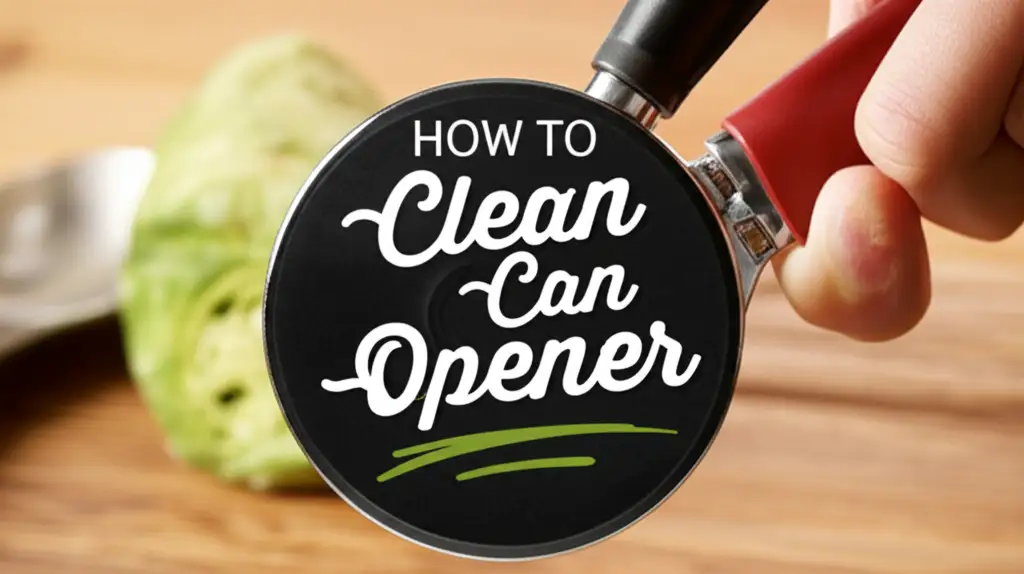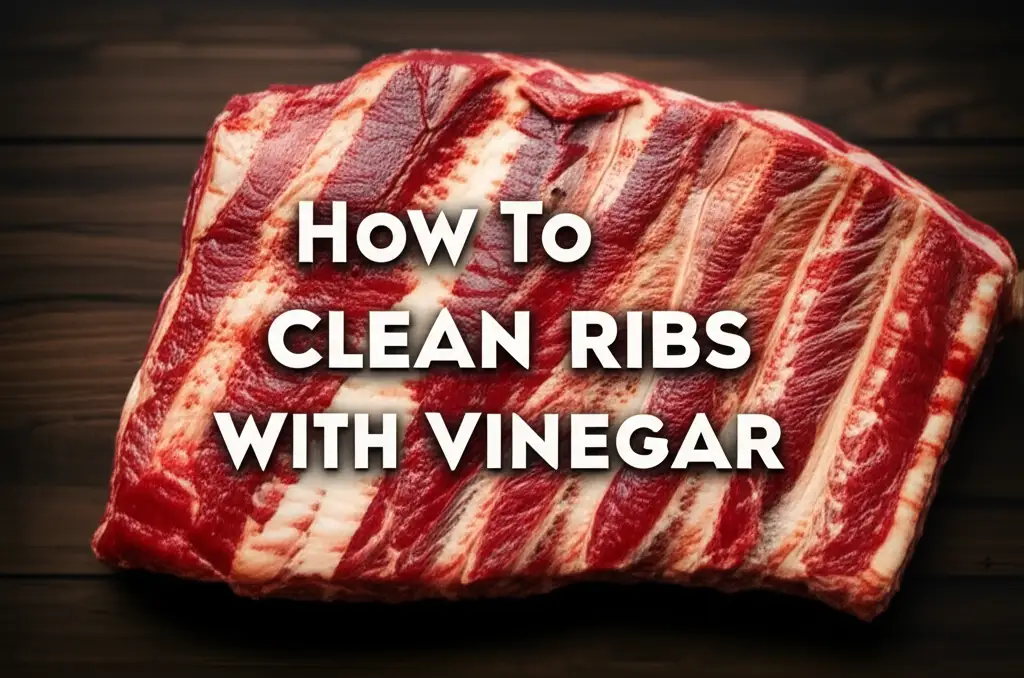· Kitchen Cleaning · 12 min read
How To Clean Can Opener

Master How to Clean Your Can Opener for Food Safety
Our can openers work hard. They open many cans for us. Yet, they often go uncleaned. Food particles and grime build up on them. This makes them a breeding ground for bacteria. Learning how to clean can opener parts is very important. It keeps our food safe. It also helps the tool last longer. This guide will show you easy ways to clean all types of can openers. We will cover manual and electric models. We will also share tips for deep cleaning, sanitizing, and rust removal. Keeping this kitchen tool clean is simple. It plays a big role in kitchen hygiene.
Takeaway
- Clean your can opener after every use with warm, soapy water.
- Deep clean manual can openers by soaking them to remove stuck-on food.
- Wipe electric can opener blades carefully, avoiding water near the motor.
- Sanitize your can opener regularly using vinegar or a bleach solution.
- Dry your can opener completely after cleaning to prevent rust.
To clean a can opener, first rinse it under warm water. Scrub away food residue with a small brush and dish soap. For deep cleaning, soak manual can openers in hot, soapy water. For electric ones, wipe the blade area with a damp cloth. Always dry the tool fully to prevent rust.
Why Cleaning Your Can Opener Matters for Health
We use can openers often in our kitchens. They touch food directly. When we open cans, small bits of food, juice, or metal shavings can stick to the cutting wheels. These leftovers become a place for bacteria to grow. If you do not clean your can opener, these germs can transfer to your next can of food. This can lead to foodborne illness.
Food safety is a top priority. A dirty can opener can cross-contaminate food. This means germs from one food item can spread to another. It does not matter if the can opener looks clean. Invisible bacteria can still be there. Regular cleaning stops this danger. It keeps your family safe from harmful germs.
Beyond germs, can openers can also get rusty. Rust is bad for two reasons. First, rust can flake off into your food. This makes your food unsafe to eat. Second, rust damages the tool itself. A rusty can opener will not cut cans well. It will also break down faster. Proper cleaning helps prevent rust. It also helps your tool work properly for many years.
Basic Steps to Clean a Manual Can Opener
Cleaning a manual can opener right after use is the best practice. This prevents food from drying and sticking. You only need a few simple things. These include warm water, dish soap, and a small brush. A toothbrush works well for this task.
First, hold the can opener under warm running water. This helps rinse off loose food bits. Then, apply a small amount of dish soap to the cutting wheels and gears. Use your brush to scrub these areas thoroughly. Pay extra attention to the parts that touch the can lid. These parts are where most food residue collects.
Make sure to clean all crevices. Food can hide in tiny spaces. Rinse the can opener again under warm water. Ensure all soap is gone. Soap residue can leave a film. It can also affect future food items.
After rinsing, dry the can opener immediately and completely. Use a clean towel for this step. Air drying can cause water spots or rust. It is important to remove all moisture. Store your dry can opener in a drawer or on a hook. This keeps it clean until its next use.
Deep Cleaning Your Manual Can Opener: Removing Stubborn Grime
Sometimes, basic cleaning is not enough. Food can get stuck deep in the gears. Grime can build up over time. A deep clean will restore your can opener. It also makes it look new again. This process needs a little more time.
Start by soaking the can opener. Fill a bowl with hot, soapy water. Place your can opener in the bowl. Let it soak for about 15 to 30 minutes. The hot water and soap will soften dried food and grease. This makes it easier to remove later. You can use strong dish soap for this step.
After soaking, use a stiff brush or a bottle brush to scrub the parts. Focus on the cutting wheel and the gear. These are the main parts that get dirty. A small, firm brush can reach into tiny spaces. If you have extremely tough grime, you can make a paste of baking soda and a little water. Apply the paste to the dirty spots. Let it sit for a few minutes. Then, scrub vigorously. This abrasive paste helps lift stubborn residue. For similar hard-to-remove grime on kitchen items, consider techniques like those for how to clean bottom of pan.
Rinse the can opener thoroughly under hot running water. Ensure all soap and baking soda are gone. Check for any remaining food bits. Repeat scrubbing if needed. Finish by drying the can opener with a clean towel. Make sure it is completely dry before storing it.
Cleaning Electric Can Openers: A Detailed Guide
Electric can openers offer convenience. They also need special cleaning care. You cannot submerge them in water like manual ones. Water can damage the motor. Most electric models have removable parts. These parts are usually easy to clean.
First, unplug the electric can opener from the wall outlet. Safety comes first. Check your model’s instructions. Many electric can openers have a detachable blade assembly. Remove this part if yours does. This detachable part can often be washed by hand with warm, soapy water. Some are even dishwasher safe. Always check your user manual for specifics.
If the blade assembly is not removable, you must clean it in place. Dampen a cloth or sponge with warm, soapy water. Wring it out well. The cloth should be damp, not dripping wet. Carefully wipe the cutting blade and the magnet area. These parts touch the can. Use a small brush to dislodge any stuck-on food. A cotton swab can help reach tight spots around the blade. Be very careful around the sharp edges.
Wipe down the entire outer surface of the can opener. Use a clean, damp cloth. Remove any splatters or dust. Dry all parts immediately with a dry towel. Make sure the blade area is completely dry. This stops rust from forming. Never spray water directly onto the unit. Also, avoid getting water into the motor housing. Proper cleaning ensures your electric can opener works well and stays hygienic.
Sanitizing Your Can Opener for Optimal Food Safety
Cleaning removes dirt. Sanitizing kills germs. Both are important for kitchen tools. A sanitized can opener ensures maximum food safety. There are several effective ways to sanitize your can opener. You can choose the method that works best for you.
One common method is using a vinegar solution. White vinegar is a natural sanitizer. Mix equal parts white vinegar and water in a bowl. Immerse your manual can opener in this solution. Let it soak for about 5-10 minutes. For electric can openers, moisten a clean cloth with the vinegar solution. Carefully wipe down the blade and any other food-contact areas. Vinegar helps kill bacteria. It also helps break down grease and rust. Many people use vinegar for cleaning tasks, such as learning how to clean mold with vinegar.
Another effective method for manual can openers is boiling. Fill a pot with water. Bring the water to a rolling boil. Carefully place your clean manual can opener into the boiling water. Let it boil for 2-3 minutes. This extreme heat will kill most bacteria and viruses. Use tongs to remove the can opener. Let it cool completely before handling.
You can also use a mild bleach solution. Mix one teaspoon of bleach with one gallon of water. Submerge your manual can opener in this solution for one minute. Rinse it thoroughly with clean water afterwards. Ensure no bleach residue remains. For electric can openers, lightly dampen a cloth with this solution. Wipe the cutting areas. Always rinse with a separate clean, damp cloth immediately. Remember to dry the can opener completely after any sanitizing step.
Dealing with Rust on Your Can Opener
Rust can appear on metal kitchen tools. Your can opener is no exception. Rust not only looks bad but also affects performance. It can also transfer into your food. Addressing rust quickly is important. There are simple ways to remove rust from your can opener.
For light rust, white vinegar is a great option. Soak the rusted part of your manual can opener in undiluted white vinegar overnight. The acetic acid in vinegar helps dissolve the rust. In the morning, use a stiff brush or an old toothbrush to scrub away the loosened rust. You might need some elbow grease. Rinse the can opener thoroughly with water. Then, dry it completely. You can also use this method for other metal items in your kitchen.
Baking soda paste also works well for rust. Mix baking soda with just enough water to form a thick paste. Apply this paste generously to the rusted areas. Let it sit for a few hours. The baking soda is mildly abrasive. It also helps to lift the rust. After it sits, scrub the rust away with a brush or a scouring pad. Rinse well and dry immediately.
For tough rust spots, you might need a dedicated rust remover product. Always follow the product’s instructions. Wear gloves for safety. After using any rust remover, wash the can opener thoroughly with soap and water. This removes any chemical residue. Remember, prevention is key. Always dry your can opener completely after every wash. Proper drying will stop rust from forming in the first place.
Maintaining Your Can Opener: Tips for Longevity
Cleaning your can opener extends its life. Good maintenance habits keep it working well. These habits prevent common problems like rust and dull blades. A well-maintained can opener saves you money. You will not need to buy replacements as often.
After every wash, dry your can opener completely. This is the most crucial step to prevent rust. Water is the main cause of rust on metal tools. Use a clean towel to dry every part. Pay attention to the cutting wheel and gears. These areas can hold moisture. If you live in a humid area, consider using a fan to help dry it.
Lubrication can also help. Some manual can openers can benefit from a tiny drop of mineral oil. Apply it to the moving parts and gears. Do this only occasionally, perhaps once every few months. Mineral oil protects the metal from moisture. It also helps the parts move smoothly. Wipe off any excess oil before using the can opener. This ensures no oil transfers to your food.
Store your can opener in a dry place. A drawer or a kitchen utensil holder works well. Avoid storing it near a sink or in a damp cabinet. Humidity can encourage rust. Inspect your can opener regularly. Check for signs of wear, rust, or damage. If the blade becomes dull, or the gears no longer turn smoothly, it might be time for a new one. A properly cared-for can opener will serve you well for years.
FAQ Section
How often should I clean my can opener?
You should clean your can opener after every use. A quick rinse with soap and water is enough for daily cleaning. Perform a deep clean or sanitizing wash at least once a month. This ensures no food residue or bacteria builds up. Regular cleaning keeps your kitchen tools hygienic.
Can I put my can opener in the dishwasher?
Some manual can openers are dishwasher safe, but many are not. Check your can opener’s manual or packaging. The high heat and harsh detergents in a dishwasher can dull blades. They can also cause rust on non-stainless steel parts. Handwashing is generally safer and more effective. Electric can openers should never go in the dishwasher.
What is the best way to remove stuck-on food from my can opener?
For stuck-on food, soak your manual can opener in hot, soapy water for 15-30 minutes. Then, use a stiff brush or old toothbrush to scrub the softened residue. A paste of baking soda and water can also help. Apply it, let it sit, then scrub and rinse thoroughly.
How can I prevent rust on my can opener?
The best way to prevent rust is to dry your can opener completely after every wash. Do not air dry. Use a clean towel to remove all moisture. Store it in a dry place, away from humidity. For metal parts, a tiny drop of mineral oil applied occasionally can also help protect against rust.
Is it safe to use a rusty can opener?
No, it is not safe to use a rusty can opener. Rust can flake off and get into your food. This can make the food unsafe to eat. Rust also harbors bacteria. A rusty can opener will not cut cans properly. If your can opener is heavily rusted, it is best to replace it.
What if my electric can opener has a non-removable blade?
If your electric can opener has a non-removable blade, unplug it first. Dampen a cloth with warm, soapy water. Carefully wipe the blade and magnet area. Use a small brush or cotton swab for tight spaces. Be sure the cloth is not dripping wet. Dry it completely afterwards. Do not submerge the unit in water.
Conclusion
Keeping your can opener clean is not just about looks. It is about food safety and the longevity of your kitchen tools. We have explored simple yet effective ways for how to clean can opener models, both manual and electric. From daily quick washes to deep cleaning and sanitizing, each step helps keep your kitchen hygienic. Remember to dry your can opener fully after every cleaning. This simple step stops rust. It keeps your can opener ready for its next use. A clean can opener means safer food. It also means less waste. Make regular can opener cleaning a part of your kitchen routine today. Your health and your tools will thank you.
- kitchen tools
- food safety
- rust removal




